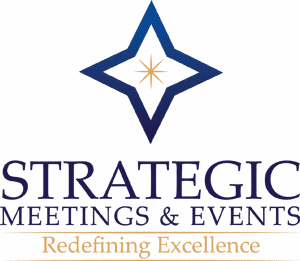The Key to a Strategic POE
By Christy Lamagna, CMP, CMM, CTSM
How to create a strategic blueprint for all your events
No matter how much time I spend putting together a program, it doesn’t fully become real until I create my Program of Events, (POE). Before I put the event together, moment by moment, room by room, it’s a myriad of details that cry out for order. Each Excel box I complete is another brick in the meeting structure, with each column adding another defining detail. When it’s complete (to the degree that I’m ever done adjusting it) the entire meeting is finally in full focus.

As I work on my POE, overlooked details make themselves known. Timing conflicts or potential challenges show their face for the first time. My ‘to do’ list is edited, staff assignments become clear, production elements crystallize and loose ends with vendors and orders are tied into neat bows.
When properly and thoughtfully constructed, POEs are the most valuable tool in a planner’s arsenal. Strategic POEs are effortless to read, can be picked up and understood by anyone and can answer any what and where question associated with the program logistics. And as is the case with most things in life, the easier it appears, the more complex it is behind the scenes.
Designing the ultimate POE takes hours of concentrated time and a significant amount of thought, effort, and diligence. The final product is your onsite bible. It will be the instant answer to dozens of questions, a reminder of details you may otherwise forget and a roadmap to everyone on the team.
While all POEs contain the basics (date, time, room, task, person managing and supporting details) there is no single way to create one. My personal preference is an Excel grid, color-coded and chock full of details, pictures, and information. Whether you are just starting to develop your own POE style, or are looking for a few, new tricks, the sample I’m sharing should add some useful elements to the forms you create.
Here are my top five POE tips:
- Use color coding to quickly identify a particular program element (production, décor, etc.).
- Include photos of florals being delivered so whoever accepts them knows what they are supposed to look like.
- List manager on duty per shift so you always know who to call.
- Create individual POEs for offsite events that have intricate details so the main document isn’t overwhelming.
- Put the version number and last updated time in the bottom right corner of the document.
- BONUS TIP: Create a POE for client/auxiliary staff so they have the main program points. If they receive the complete POE, you may spend a lot of time explaining things unnecessarily.
If you have ideas for future articles, forms you’d like us to share or feedback on this blog, please reach out. Email me at Christy.Lamagna@strategic.events or @SMEChristy on Twitter.




